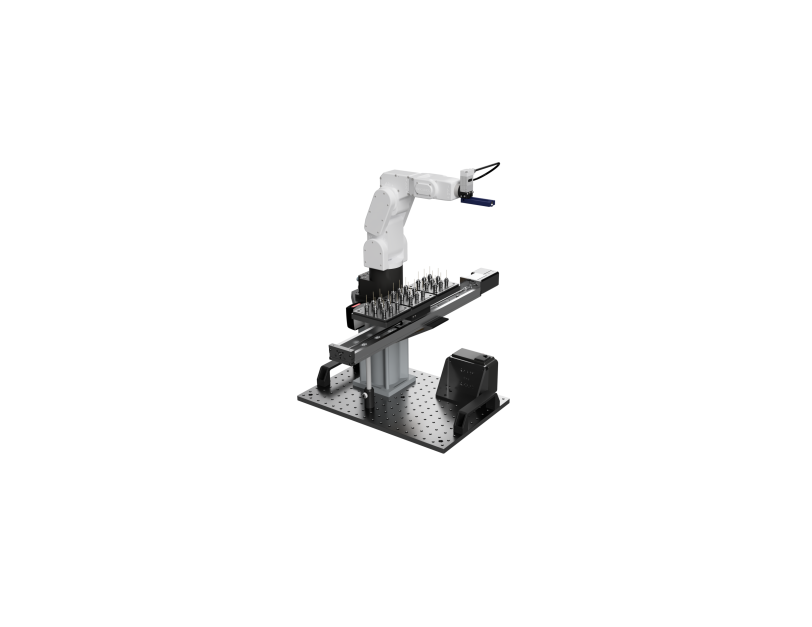Mail-in Powder Diffraction
For access to the mail-in powder diffraction program, start here...
For a calendar of scheduled mail-in diffraction beamtimes, click here...
Powder diffraction is a workhorse technique in physics, chemistry, material science, and a diverse range of other scientific areas. Great progress has been made in the use of lab based instruments for routine and advanced powder diffraction measurements, however synchrotrons still offer significant advantages and continue to see a large demand for high quality synchrotron powder diffraction data. Powder diffraction is also one of the more accessible synchrotron based techniques, making it an excellent introduction for users new to the opportunities afforded by large user facilities.
The rapid data collection enabled through use of the Pilatus 100K small area detector, with full data collection times on the order of 1-10 minutes, has motivated the development of a robotic sample changer. The robotic sample changer can run a large number of samples in a standard capillary geometry in a fully automated and unsupervised mode. This mode of operations allows the beamline to collect data on large numbers of samples very efficiently and enables both mail-in and remote operations.

The robotic sample changing platform is a modular design built around a small 6-axis robotic arm from Mecademic. It is focused on enabling high throughput, high quality data collection for routine samples but which can be easily installed or removed from the beamline so as to still enable complex in situ or operando setups to be installed. Powder samples can be loaded into Kapton capillaries of diameter ~0.7mm. These in turn are mounted into magnetic steel bases with unique sample ID numbers encoded in barcodes on the bottom. Up to 27 such samples can be mounted onto a sample plate which in turn mounts to the robotic sample changer with a magnetic kinematic mount.
Typical instrumental resolution for a 0.7mm diameter capillary, which is standard for the robotic sample changer, is shown in the figure to the left. This is compared to the resolution obtained using an analyzer crystal. Data was obtained from a standard sample of LaB6.





